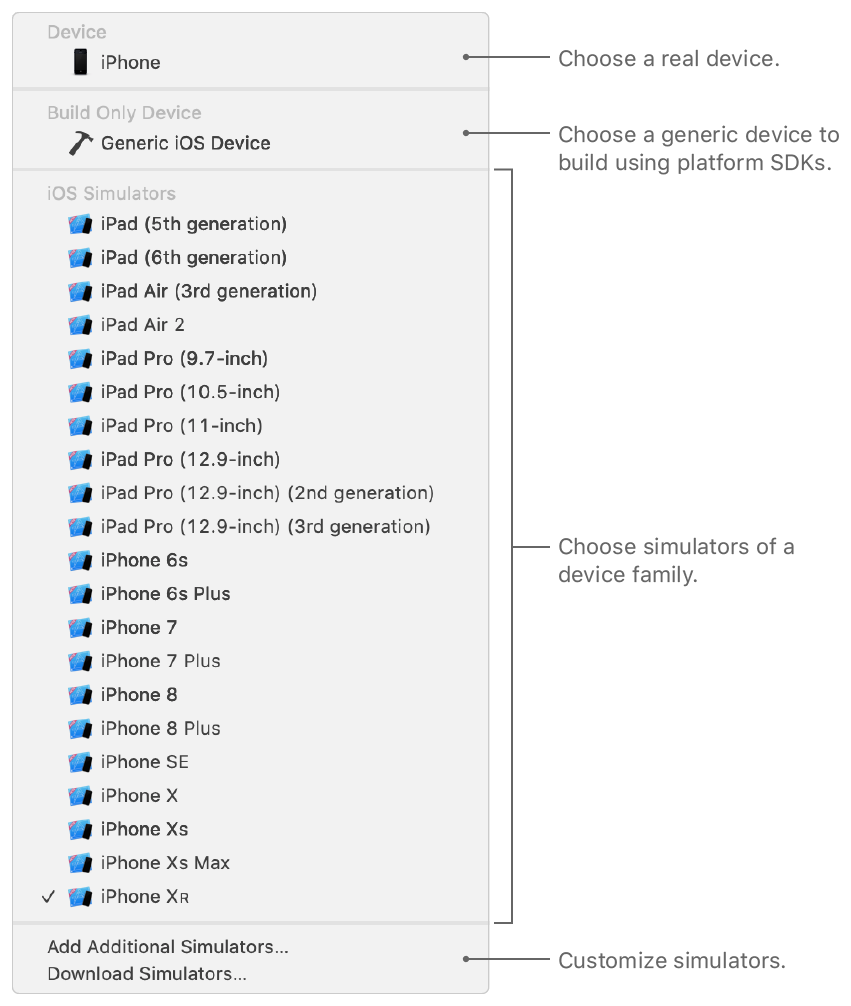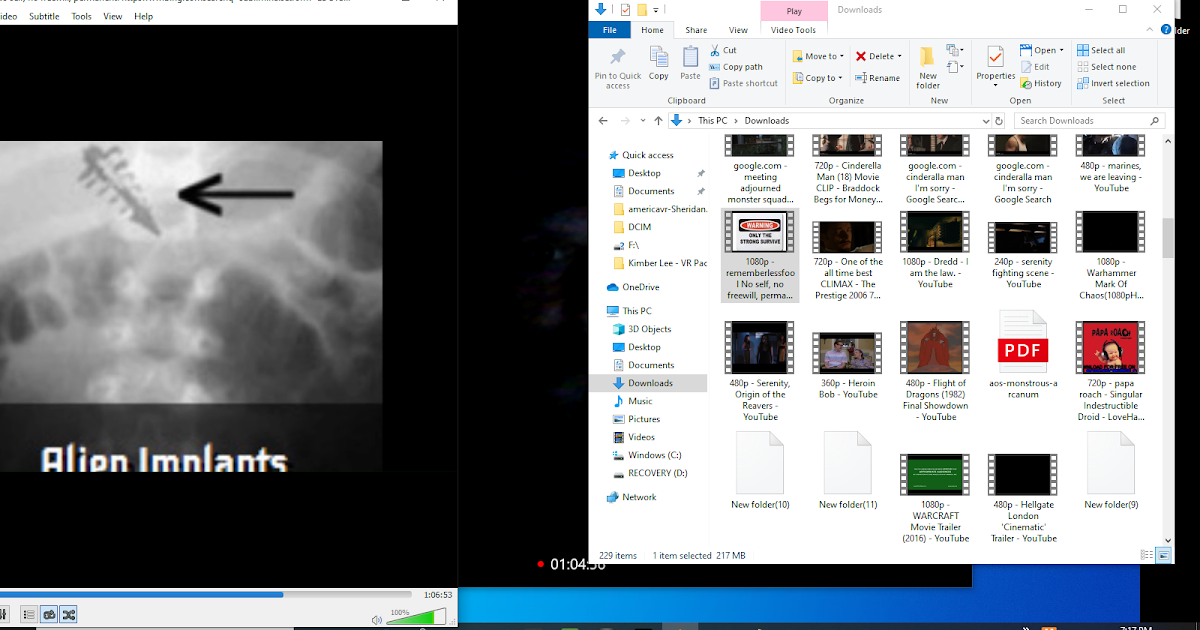Because of side loading being blocked since macOS 11.3, I'm kind of stuck with macOS 11.2.3, but I would really like to upgrade. So I tried looking for alternatives, and iOS simulator from Xcode is what I think could allow me to run some iOS Apps on Mac. If anyone is still finding it difficult, when you download simulator, from Devices and Simulators option, you select an iOS version (say iOS 14.4). Once the download is finished and installed, you will have all the iPhone device simulators and iPad device simulators of OS version 14.4 available to be used as target device. Bold new experience. Unparalleled power. Legendary ease of use. I'm using visual studio code extension 'React Native Tools' for running and building my react native application on simulator/device. Is there a way to specify simulator version for ex. Currently when i start my build configuration for 'Debug iOS', simulator 'iPhone X' started automatically. Here is my launch.json. Apple’s homegrown Xcode software development environment for Mac comes with its own app simulator for iOS, tvOS, watchOS, and iMessage. So, if one is using Xcode as the primary app development.
iOS 15 was announced at WWDC 2021 with several new features, including redesigned notifications, FaceTime enhancements, and more. Apple has also expanded support for Spatial Audio, which now works in FaceTime and also on Apple TV, but that’s not all.
Thanks to a new “Spatialize Stereo” option, iOS can now simulate Spatial Audio for non-Dolby content, which will now detect head movement with AirPods to change the direction of the sound.
Spatial Audio was announced with iOS 14 last year as a feature to bring more immersive sound to AirPods Pro users (and now AirPods Max as well). It uses sound recorded with Dolby technology to simulate 360-degree audio with a surround experience, which moves in the headphones as the user moves their head.
Some movies and TV shows from apps like Apple TV+ and Disney+ were already compatible with Spatial Audio as they have content available in Dolby Atmos, but the same immersive experience didn’t work with regular videos — at least until now.
With this new Spatialize Stereo option, you can listen to pretty much any song or video with Spatial Audio using AirPods Pro or AirPods Max. This, of course, won’t bring the three-dimensional sound experience that Dolby content offers, but it does a good job of simulating the audio coming from different directions as you move your head with AirPods.
To enable Spatialize Stereo in iOS 15 and iPadOS 15, just connect your AirPods Pro or AirPods Max and start playing any content. Then go to the Control Center, press and hold on the volume slider, and you will see the new option there. It’s worth noting that this feature also works in macOS Monterey.
You can try Spatialize Stereo with videos from your photo library or even with Spotify songs. The only downside is that it doesn’t seem to work with apps that have their own player, such as YouTube (it only works in the web version in this case).
iOS 15 is now available as a beta release for developers, and a public beta will be available in July. The official release, however, is coming this fall. The update brings fundamental changes to notification management, new features in iMessage, more privacy controls, and more.
Read also:
FTC: We use income earning auto affiliate links.More.
Question or issue on macOS:
I’m writing an iOS app that acts as, among other things, a telnet server. Naturally, it begins listening for connections as soon as it starts.
When I run the app in the Simulator, Mac OS X (I happen to be on 10.7.3) prompts me to Allow or Deny my application to accept incoming network connections. This is the standard Firewall message that Mac OS X uses for all unsigned, networked applications.
I grow weary of clicking “Allow” fifty or more times a day, and so I seek a way of permanently adding my app to the Firewall’s list of permitted apps.
I’ve tried the following.
In the last step there’s a significant decision. You could add either the .app application package, or Show Contents on that package and add the “Unix executable” within. I’ve tried both approaches.
Interestingly, Firewall will in fact stop warning you about the app—for a while. After a few runs, however—it isn’t clear to me what event actually causes this change, but it happens within half an hour or so for me, generally speaking—Firewall begins warning about the app again.
How do I set Firewall to permanently Allow my iOS app?
Naturally, I could bypass this whole problem by disabling the Mac OS X firewall. I could also avoid ever again getting a splinter in my foot by chopping it off. Neither of these courses of action recommend themselves to me.
What would you suggest?
How to solve this problem?
Solution no. 1:
Ios Emulator Mac Os
So we want to suppress the following dialog
Do you want the application “NNN.app” to accept incoming network
connections?
which appear on every activation of the Xcode iOS simulator.
I believe there is now a solution for that. Basing my answer on this blog.
Mac Os Simulator For Windows
Simply run the following commands in a Terminal window:

For me it worked. Please note simulator address is according to Xcode 8. Call of duty black ops 2 zombies trainer pc download.
Solution no. 2:
After dabbling with this for some time, I found that manually adding the executable itself to the Firewall “Allow” list gives the desired result. You don’t add the .app, but rather the “Unix” executable inside the .app’s Contents folder. I believed I had tried this file before without success, but currently it’s working.
Solution no. 3:
I think the best solution might be to script the process of okaying your app to the firewall.
If I recall correctly, the latest OSX firewall is actually clever about identifying apps and fingerprints the allowed binaries. This prevents the surprisingly effective tactic of just naming your malware “system32.exe” &c to evade the firewall. If that’s the case, your app will be (correctly) blocked for not being the same binary that was okayed, and there’s not really any way around it.

So, try scripting the firewall allowing process and incorporate that into the build process.

Solution no. 4:

I never had luck with manually adding the executable to the firewall’s allowed-list. Here’s a solution using an automated mouse click:
- Download CLIclick. (Thank you Carsten.)
- Put it in a suitable location, say
/usr/local/bin. - Get the
Allowbutton’s screen coordinates using ⌘⇧4. (In my example, these are x: 750, y: 600.) Create a script with this content (the
w:is the wait time in ms):(I couldn’t get
CLIclickto work without “moving” it to the same location (them:+0,+0part) and clicking again at the same spot withc:..)- Open Xcode’s
Preferences / Behaviorsand add the above script. - Enjoy!
Solution no. 5:
I don’t know if it is the right way but for me worked.
- Turn off the firewall
- Connect with the iphone app to your mac
- Check if everything in the connection working
- Turn on the firewall